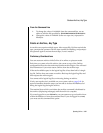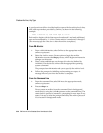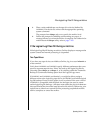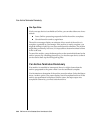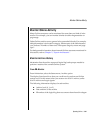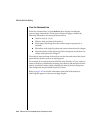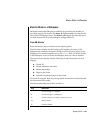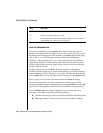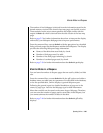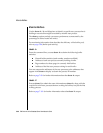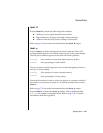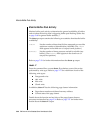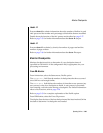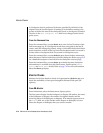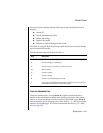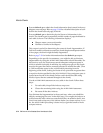
Operating OnLine 3-65
Monitor Blobs in a Dbspace
The number of free blobpages is derived from the information stored in the
shared-memory version of the chunk’s free-map page, not the disk version.
These statistics are the most current possible and might conflict with the
output of tbstat -d, which is derived from the disk version of the free-map
page.
Refer to page 5-5 for further information about how to interpret the display
and modify your blobspace blobpage size to improve performance.
From the command line, execute tbcheck with the -pe options for a detailed
listing of chunk usage first the dbspaces and then the blobspaces. The display
provides the following blobspace usage information:
■ Names of the tables that store blobs, by chunk
■ Number of disk pages used, by table
■ Number of free disk pages remaining, by chunk
■ Number of overhead pages used, by chunk
Refer to page 7-43 for further information about the tbcheck -pe display.
Monitor Blobs in a Dbspace
You can learn the number of dbspace pages that are used by blobs, but little
else.
From the command line, execute tbcheck with the -pT options and either a
database name or a table name as a parameter. For each table in the database,
or for the specified table, OnLine displays a general tblspace report.
Following the general report is a detailed breakdown of page use in the
extent, by page type. Look for the blobpage type for blob information.
More than one blob can be stored on the same dbspace blobpage. Therefore,
you can count the number of pages used to store blobs in the tblspace, but
you cannot estimate the number of blobs in the table.
Refer to page 7-44 for further information about the tbcheck -pT utility
displays.



